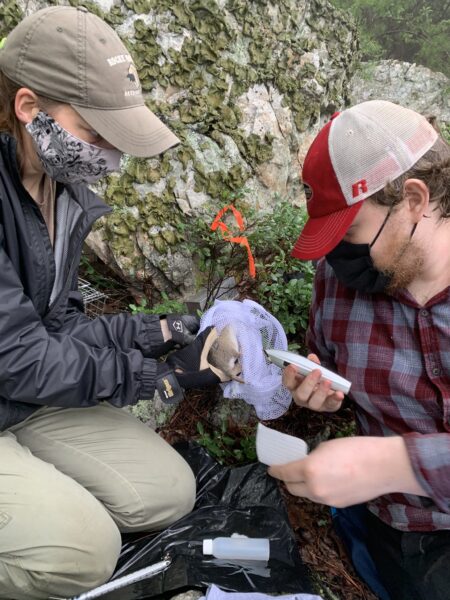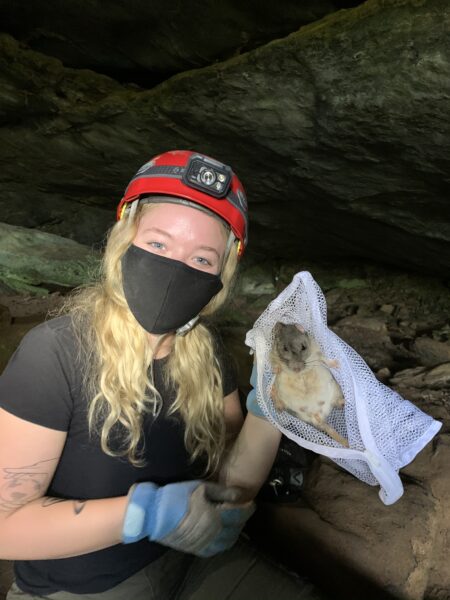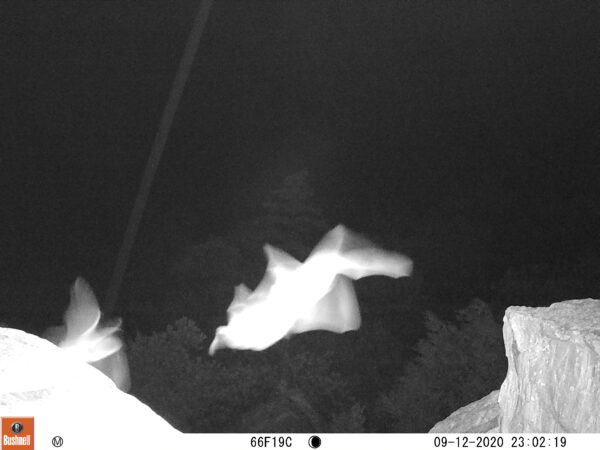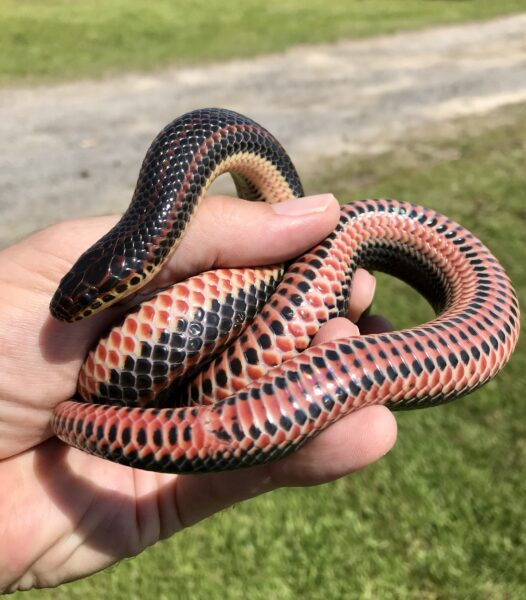Woodrat Genetic Sampling
DWR Region 4 Nongame Biologist, along with Dr. Karen Powers and students from Radford University, are conducting Allegheny woodrat trapping to collect DNA and staple isotope samples as well as determine presence/absence at historic sites. DNA samples will be used to fill-in data gaps from a previous study conducted between 2008 and 2011. These data will also be used for a larger range-wide genetics project. With Allegheny woodrats declining significantly in the Northeast and Midwest, Virginia and West Virginia may be the stronghold for this species and play an important role in potential reintroduction efforts.


The first picture to the right is a Radford University student holding Allegheny woodrat for processing and the second is Dr. Powers and student collecting hair sample from an Allegheny woodrat.
Small-footed Bat Winter Roosting Habitat
White-nose syndrome (WNS) has caused a dramatic decline in several bat species across a large section of North America. The small-footed bat is one species that has been impacted, but the degree of impact is not fully understood. There is speculation that small-footed bats may not be as heavily impacted because they use alternative hibernacula during the winter. In addition to hibernating in caves, it is suspected small-footed bats use large rocky boulder fields and cliff faces where WNS may not be found. As a pilot effort, Region 4 Nongame Biologist and Dr. Paul Moosman (VMI) are pairing video, still photography, and acoustic recorders at large talus areas to document the use of this habitat as winter hibernacula for small-footed bats.
The first picture below is two bats captured by still photography at Devil’s Marbleyard. The second, are Blurry images caused by slow shutter speed of camera, a learning point concerning equipment limitations.


Rainbow Snakes and Snake Fungal Disease
A few years ago, snake enthusiasts began to report finding dead rainbow snakes with no obvious injuries. In response, specimens were sent to the Southeastern Cooperative Wildlife Disease Study in Athens, Georgia. As suspected, they tested positive for Snake Fungal Disease (SFD). SDF is an emerging wildlife disease that has caused mass mortality of Timber Rattlesnakes in New Hampshire and Eastern Massasaugas in Illinois. However, it had not been connected to any mortality events in rainbow snakes…until now.
Working with researchers from Virginia Tech, the Department of Wildlife Resources and State Parks have begun to sample snakes from around the Back Bay region. The primary objectives of this investigation are 1) to better understand the prevalence of SFD throughout the year, and 2) why is it that rainbow snakes seem to be particularly susceptible, as no other species of snake has been found dead from the disease. In 2020, approximately 60 individual snakes (nine rainbow snakes) of eight different species were sampled. Each snake was swabbed for SFD, processed, marked with a PIT (Passive Integrated Transponder) tag and released. In 2021, we hope to recapture some of these snakes to better understand survivorship and the overall impacts of this deadly disease.





